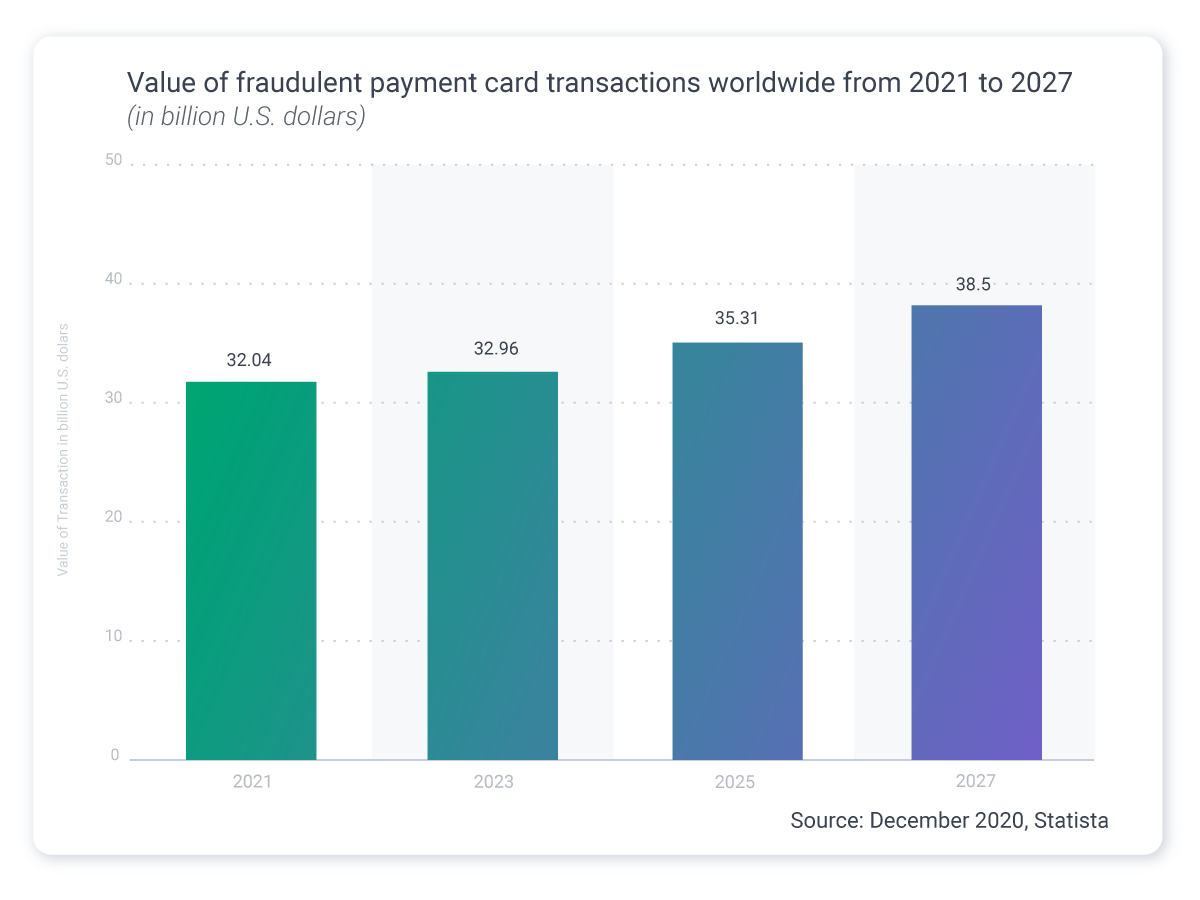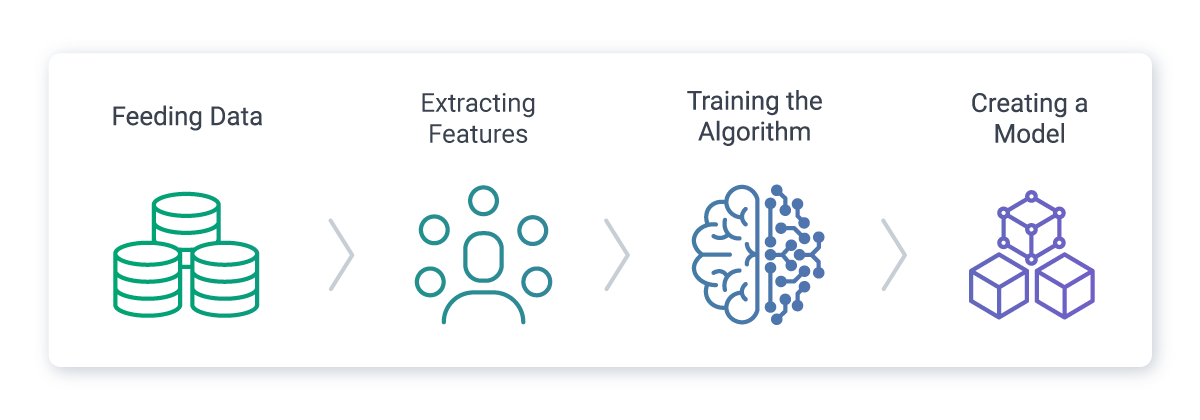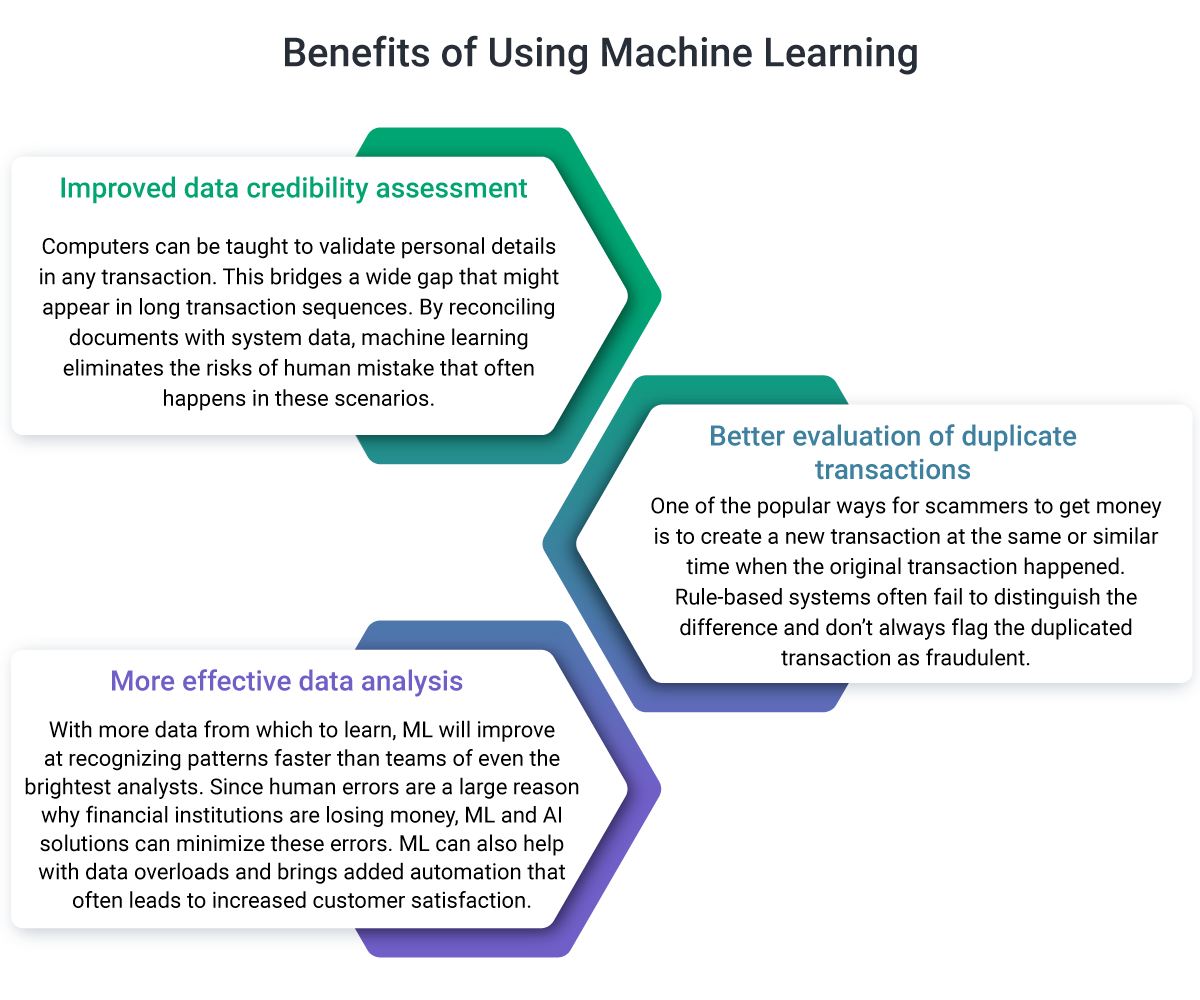It’s been estimated that the value of fraudulent transactions will rise $6.5B from 2021 to 2027, and will have far-reaching effects on the finance industry. Proactive fraud prevention will take center stage for financial institutions as they look for the best solutions to reduce fraud and increase the overall security of their clients.
Machine learning (ML) is a process of “teaching” machines to recognize patterns in vast amounts of data, often considered similar to artificial intelligence (AI), indicating a significant crossover between AI and ML in various applications.
Today, millions of people are in contact with ML through many popular applications. Uber and Google Maps use it for commute estimations, while Siri, Alexa, and Google Assistant are utilizing ML to provide users with the right information tailored to their individual preferences.

How can financial institutions take advantage of the incredible efficiency of ML to help protect their client’s transactions and reduce overall fraud? We will focus on answering this question, using evidence of how ML has been successful thus far in preventing fraud in the finance industry.
What is Fraud Detection and Why Does It Create Problems?
Technology is making many people’s lives more convenient at an astonishing rate. In banking, this means that there are greater consumer expectations when it comes to digital and mobile options. Financial institutions, a core part of the financial services sector, must process billions of transactions with greater accuracy since more and more customers choose to bank online, leveraging advancements in financial software. However, wherever there’s an abundance of data, the potential for fraudulent behavior grows greater.
Scammers have found more innovative ways to sneak in thousands upon thousands of fraudulent transactions every second, making it harder for financial institutions to detect deceitful activities. Cybersecurity Ventures estimated that cybercrime will cost the global economy about $10.5 trillion dollars annually by 2025 which is nearly double what was reported last year. For an idea of scale, this amount of money is several times larger than all damage inflicted by natural disasters in the US in 2021, where the cost was a staggering $145 billion.
Since most businesses cannot use human labor to fight the amount of fraud technology developing in finance, we must rely on machines to combat issues before they arise. Since manual systems don’t have the capacity to control real-time data streams, financial institutions have implemented automated and rule-based fraud detection.
However, there’s a solution that works much better than rule-based systems - ML and AI. The ability of machines, through the use of ml algorithm, to learn from past data patterns to spot anomalies is as astounding as it is necessary, especially in financial software.
Where Financial Fraud Happens
There are a few specific areas where we find that financial detection software can be most helpful in successfully detecting fraud and raising red flags for companies.
Credit card fraud is a significant concern within financial services, with ai and ml playing crucial roles in detection and prevention. is the most common payment fraud type since data can be digitally stored giving criminals more chances to get away with the crime. This type of financial fraud often involves stealing card information, so ML solutions mainly focus on identifying transactions that don’t fit into the clients’ regular spending habits.
ATMs are prone to various types of fraud, including theft of debit card numbers and PINs. Most ATM fraud is focused on false doorway card readers as they have access to and save people’s card numbers. By acquiring card data, thieves can create duplicate cards and use them for various transactions or to withdraw money.
Point-of-sale (POS) fraud is utilized by employees to steal money from their employers. The best prevention for POS fraud in financial services is regular data checks conducted after every shift, day, week, or at the end of the month, a key part of process automation. ML can play a significant role in analyzing chunks of data to validate the number of logs per user, transaction deletions, bill records, refunds given per customer, and loyalty program card usage.

Email phishing is a type of fraud in which emails pose as legitimate contact, containing links to lure users into entering their sensitive data. Phishers have become better at evading detection by hiding malicious files, pushing financial companies to use ai and ml in more innovative ways for cybersecurity. Today, ML-based malware scanners are one of the most successful tools able to detect malicious emails and delete them before they even get to the user’s inbox.
Microsoft combats phishing efforts using Office 365 Advanced Threat Protection, which detects millions of harmful emails before they reach users. Google also uses ML to block millions of emails and malware that could endanger their users’ data. Their ML models, a critical component of software development in cybersecurity, have quickly evolved to identify phishing threats better and have successfully blocked 99% of spam emails before they reach the user’s inbox.
Mobile fraud is becoming more common as payment methods are often stored on consumers’ smartphones. Skilled hackers can access that information and trigger unapproved transactions unless there’s an ML-powered tool to inform users on time.
Why Is Machine Learning So Effective for Fraud Detection?
ML is based on computational statistics and needs a mathematical model to determine what is deemed as “normal” user behavior. Once it has access to past data, the machine, enabled by a sophisticated ml algorithm, can make predictions and becomes more accurate over time, illustrating the evolution of machine learning in banking.

Payments are one of the most digitized parts of the financial industry. Due to the rise of mobile payments and the lack of security in many mobile wallets, these transactions are highly vulnerable to fraudulent behavior. Financial institutions are working hard to ensure the safety of every transaction with rule-based systems, but since this often includes additional verification steps, it can greatly impact the customer experience. Many users are unwilling to add another layer of protection as it will create more friction in their payment process.
Financial companies can use ML and AI to have knowledge about the spending habits of any customer throughout the year and its fluctuations. Once the pattern is revealed, it becomes easy to detect issues and block transactions that seem odd. This way, customers are better protected, without being inconvenienced by additional verification steps.
The Benefits of Using Machine Learning in Fintech Application Development

ML can be applied in several areas of the overall payment process to prevent fraud. It allows clients' account information to remain safe and lowers overall costs incurred, such as the time operators spend in call centers trying to help clients mitigate the consequences of scams. Beyond cost and resource savings, benefits of ML include:
Improved data credibility assessment
Computers can be taught to validate personal details in any transaction. This bridges a wide gap that might appear in long transaction sequences. By reconciling documents with system data, machine learning eliminates the risks of human mistake that often happens in these scenarios.
Better evaluation of duplicate transactions
One of the popular ways for scammers to get money is to create a new transaction at the same or similar time when the original transaction happened. Rule-based systems often fail to distinguish the difference and don’t always flag the duplicated transaction as fraudulent.
More effective data analysis
With more data from which to learn, ML will improve at recognizing patterns faster than teams of even the brightest analysts. Since human errors are a large reason why financial institutions are losing money, ML and AI solutions can minimize these errors. ML can also help with data overloads and brings added automation that often leads to increased customer satisfaction.
Fraud Detection AI and ML Models and Algorithms
There are a handful of algorithms used to “train machines'' and the two most popular ones are supervised and unsupervised models. When an algorithm is used as a set of instructions, machines can build models by processing data to create a baseline with which they can compare new information.
Supervised learning models
A supervised model is the most common model of ML across multiple disciplines. Once machines are “fed” with enough data with tagged transaction information, they will generate spending models and compare new data with what they already have. Fraudulent and regular user behavior is labeled beforehand so the machine can understand the difference and only needs to learn from it. The more data a machine has, the easier it is for it to make accurate assumptions.
Unsupervised learning models
Unsupervised models differ from supervised ones because they work with data theirt is unlabeled so the machine must learn to recognize fraud on its own. In some cases, it's difficult to identify which transaction is problematic and that’s when the machine takes up assumptions based on large data sets it has learned from.
Semi-supervised learning models
Semi-supervised learning falls somewhere in-between between supervised and unsupervised models. It manages well in situations when labeling information is not possible, making assumptions based on discovered patterns.
Reinforcement learning models
Reinforcement learning algorithms allow machines to discover behavior norms inside a specific context to learn from. These systems constantly learn and look to find behavior that doesn’t fit and raise red flags when it finds it.

Final Thoughts on Financial Data Fraud Prevention
Machine learning algorithms demonstrate their full potential when used for pattern identification in the finance industry. They are able to detect correlations that would be otherwise unrecognizable in vast data sets. Human analysts would need hours to discover one particular pattern that ML can analyze and learn from significantly faster.
In finance, ML can be used in various ways, from analyzing credit history, payments, and remittances, to preventing user fraud. ML and AI have the incredible ability to evaluate massive chunks of data in real-time, recognize patterns, and label transactions as fraudulent, showcasing the pivotal role of ai in fintech.
By using available data sets for ML, banks, neobanks, payment providers, and other financial institutions can build prevention systems and assist customers on a level that rule-based systems cannot. Ultimately, every bank, card issuer, or bank, aims to secure customers’ sensitive information and money as fraud can heavily influence their business’s future and reputation.












